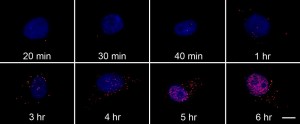Probably not. A study has already shown that the difference in nutritional content from organic and non-organic produce is minimal. Now at least one scientist is saying that differences in the amount and types of pesticides used in organic farming can be just as hazardous as the ones in non-organic farming. From Scientific American:
In head-to-head comparisons, natural pesticides don’t fare any better than synthetic ones. When I compared the organic chemicals copper sulfate and pyrethrum to the top synthetics, chlorpyrifos and chlorothalonil, I found that not only were the organic ones more acutely toxic, studies have found that they are more chronically toxic as well, and have higher negative impacts on non-target species. My results match with other scientific comparisons. In theirrecommendations to Parliament in 1999, the Committee on European Communities noted that copper sulfate, in particular, was far more dangerous than the synthetic alternative. A review of their findings can be seen in the table on the right (from a recent review paper). Similarly, head to head comparisons have found that organic pesticides aren’t better for the environment, either.
Organic pesticides pose the same health risks as non-organic ones. No matter what anyone tells you, organic pesticides don’t just disappear. Rotenone is notorious for its lack of degradation, and copper sticks around for a long, long time. Studies have shown that copper sulfate, pyrethrins, and rotenone all can be detected on plants after harvest—for copper sulfate and rotenone, those levels exceeded safe limits. One study found such significant rotenone residues in olives and olive oil to warrant “serious doubts…about the safety and healthiness of oils extracted from drupes treated with rotenone.” Just like with certain synthetic pesticides, organic pesticide exposure has health implications—a study in Texas found that rotenone exposure correlated to a significantly higher risk of Parkinson’s disease. The increased risk due to Rotenone was five times higher than the risk posed by the synthetic alternative, chlorpyrifos. Similarly, the FDA has known for a while that chronic exposure to copper sulfate can lead to anemia and liver disease.
So why do we keep hearing that organic foods have fewer pesticide residues? Well, because they have lower levels of synthetic pesticide residues. Most of our data on pesticide residues in food comes from surveys like the USDA’s Pesticide Data Program (PDP). But the while the PDP has been looking at the residues of over 300 pesticides in foods for decades, rotenone and copper sulfate aren’t among the usual pesticides tested for—maybe, because for several organic pesticides, fast, reliable method for detecting them were only developed recently. And, since there isn’t any public data on the use of organic pesticides in organic farming (like there is for conventional farms), we’re left guessing what levels of organic pesticides are on and in organic foods.
Read the whole story here.
